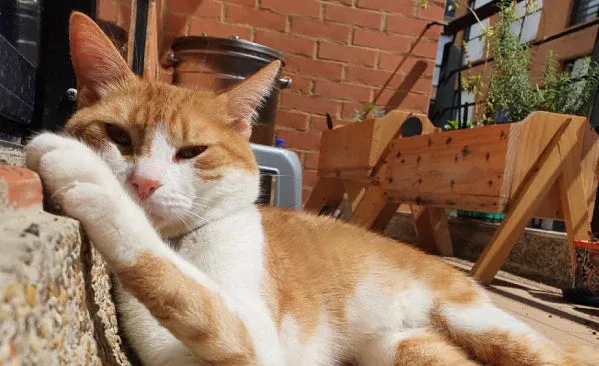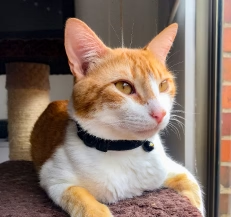Happy Cats Start with Good Food
We all want our cats to be happy and healthy, and the right food plays a huge role in that. Whether you’re feeding a kitten, an adult, or a senior, each stage has its own nutritional needs. In this blog, we’ll explore the best food for your cat at every age and why Queen Nala’s organic options are a great choice for your furry friend.
Some cats eat their entire meal at once, while others prefer to graze throughout the day. The important thing is to maintain a consistent daily portion, whether you serve a mix of wet and dry food or stick to just one. Avoid refilling their bowl simply because it’s empty, as overfeeding can lead to obesity and other health issues.
We serve Nala two portions of wet food , one in the morning and one at night, while providing small portions of dry food throughout the day. The right portion sizes depend on a cat’s weight, age, and any specific medical conditions.
As mentioned before, kittens, adult cats, and senior cats have different nutritional needs. Kittens require protein-rich, high-calorie diets with essential nutrients like DHA and calcium to support growth, eating frequent small meals. Adult cats need balanced nutrition with controlled portions to maintain a healthy weight, along with proper hydration to prevent urinary issues. Senior cats benefit from lower-calorie, high-protein diets that support muscle maintenance, joint health, and digestion, often with softer textures for easier eating.
As Dr. Yuki Hattori states in What Cats Want:
“There are two sorts of cat food ‘complete,’ which caters to all a cat’s nutritional requirements, and ‘complementary,’ which has more of some nutrients than others.”
Complete vs. Complementary Wet Food
When choosing wet food, it’s important to know whether it’s complete or complementary:
- Complete Wet Food: Formulated to meet all of a cat’s nutritional needs, making it suitable as a sole diet. Ideal for hydration, dental health, and picky eaters.
- Complementary Wet Food: Designed to be paired with other foods, such as dry kibble, to create a balanced diet. This option adds variety, increases moisture intake, and enhances mealtime appeal.
There are many wet food options on the market, varying in recipes, textures, and prices. As a pet parent, it’s important to choose a product that best meets your cat’s needs. Personally, I believe in understanding exactly what goes into my cat’s bowl and ensuring it provides the best possible nutrition.
Why Choose Organic Food for Your Cat?
As cat parents, we want the best for our furry companions. The food we choose directly impacts their health, energy levels, and overall happiness. That’s why organic cat food is an excellent choice offering superior nutrition and unmatched quality.
The Benefits of Organic Cat Food
- Better Nutrition: Organic ingredients are free from synthetic pesticides, fertilizers, and artificial additives. They provide a purer, more wholesome diet packed with essential vitamins, minerals, and antioxidants.
- Free from Harmful Additives: Many conventional cat foods contain fillers, artificial flavors, and preservatives that can negatively impact digestion. Organic cat food eliminates these unnecessary components, ensuring a cleaner, healthier meal.
- Supports Long-Term Health: A natural, balanced diet reduces the risk of chronic illnesses like kidney disease, obesity, and diabetes, giving your cat the nutrients they need to thrive.
For all these reasons, I wholeheartedly recommend Queen Nala. A premium, organic cat food designed to meet your cat’s nutritional needs with high-quality ingredients. Because when it comes to our feline friends, only the best will do!


